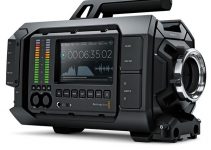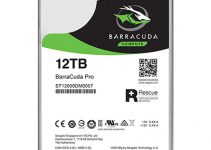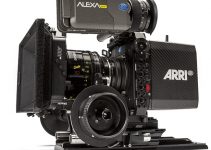For video shooters working on a budget, there is no other entry-level camera like the Sony A6500, a compact mirrorless delivering high-quality 4K footage that can easily be intercut with clips from way more expensive cinema-grade cameras, or even hold its own visual style and aesthetics in an entire project. In addition, the built-in five-axis sensor stabilization and exceptional low light capabilities give users the best bang for the buck, especially when you consider the relatively low price tag.
While the camera is essentially a godsend to most indie filmmakers, just like any other rival, the A6500 does have its own quirks, and it’s far from perfect. Some of these issues include overheating, rolling shutter artifacts, manufacturer limitations, and the list goes on. To sort things out, seasoned filmmaker Tom Antos provides some practical tips and tricks on how to solve the most common problems one may come across when filming with the A6500.
Arguably, the most annoying issue with the camera is its atrocious battery life. Mainly due to its small form-factor, the unit only has a room for a tiny battery which can be depleted in an hour or so, depending on your shooting settings.
To solve this, the simplest solution would be to buy a lot of extra batteries to have on set. If you’re short on cash, however, you could get batteries from third-party manufacturers that are cheaper and perform just as well as Sony batteries. Alternatively, you could run the camera on external power sources via the Micro-USB port on the side or by using a dummy battery connected to a larger powered battery unit.
The next problem with the Sony A6500 is its tiny screen, which is hard to view in awkward angles and bright sunlight. Of course, the cheapest solution is to use the electronic viewfinder right above the LCD, but this is not always convenient for those who are moving the camera around constantly. Instead, purchasing a reliable field monitor seems to be a better viable alternative.
SmallHD makes some of the best monitors in the industry with their Focus lineup. These are, however, leaning towards on the expensive side, so if you’re on a tight budget, offerings from Andycine and Aputure may have more attractive price tags ranging from $150 to $300.
Another problem affecting time-lapse shooters is the fact that the A6500 does not have a built-in time-lapse shooting mode. Of course, Sony does offer their own through the PlayMemories store, although that does cost a bit of money and the app isn’t available worldwide. The workaround for this shortcoming is to use a reputable third-party application that can get the job done for free. Antos explains how to install such an app in the following video.
The software will allow you to set parameters such as time-lapse duration and shooting intervals. It will also give you the option to shoot using the silent shutter, which is highly recommended. Note, however, that it won’t automatically convert the photos into a single video, but this process is easy to carry out in your NLE of choice.
Rolling shutter is another common issue with the A6500, especially when shooting 4K with all that extra screen real-estate compared to filming in 1080p. Before you turn your head against the A6500, you should try the following fix. If you edit with Premiere Pro CC, you can use the Rolling Shutter Repair plug-in on your A6500 footage. After a bit of tweaking in the plug-in settings, you should end up with little to no jello effect in your clip.
Another issue infamously associated with the A6500 (and other Alpha cameras) is the camera’s tendency to overheat, causing the unit to shut-down (even mid-take). This occurs during long recording times, especially outdoors, since the processor has to take all video data and process the images in real-time. The overheating effect is especially prominent when shooting in 4K since the processor needs to do most of the heavy lifting.
There are a few tricks to get around the overheating issue. Firstly, set the Auto Pwr. OFF Temp setting to High instead of Standard, which you can do inside of the Setup menu. This step will increase the camera body’s temperature tolerance so that you can shoot for longer before the unit has to shut down and cool off.
Another simple technique is to open up the LCD screen and move it away from the camera body, allowing hot air to dissipate out of the device more easily. Alternatively, using an external recorder can take the workload off the camera’s processor, thus enabling you to shoot for an extended amount of time.
The last common flaw mentioned in the Tom Antos’ video is the 30-minute recording time limit. Similar to the time-lapse issue, the limitation can be surpassed with the use of a third-party app, the installation instructions for which you can find in the video below.
[source: Tom Antos]
Order Links:
- Sony Alpha a6500 Mirrorless Digital Camera (Body Only) (B&H, Amazon)
- Wasabi Batteries and Charger for the Sony a6500 (a6300) (Amazon)
- Watson NP-FW50 Lithium-Ion Battery Pack (B&H)
- Andycine A6 5.7-inch LCD Monitor (Amazon)
- SmallHD FOCUS Sony Bundle (B&H)
Disclaimer: As an Amazon Associate partner and participant in B&H and Adorama Affiliate programmes, we earn a small comission from each purchase made through the affiliate links listed above at no additional cost to you.




